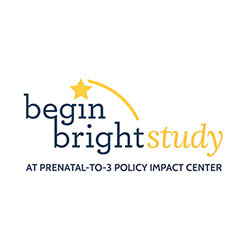Opportunity begins before we are born. Beginning prenatally, certain children will face substantial obstacles to healthy development, whereas others will thrive from the start.
Opportunity follows state policy choices. Where a baby lives makes a big difference in whether that child experiences poverty or trauma—or a nurturing, responsive household.
Today, the National Academy of Sciences released a broad-reaching, milestone report on opportunity. The report touches on paid leave, child care, and many other policies that support all children’s ability to grow into adults who succeed in school and careers, avoid illness and injury, enjoy strong and healthy relationships, and contribute to the safety and economic growth of their communities.
I had the pleasure of serving on the committee that developed Closing the Opportunity Gap for Young Children. To draft this report, we performed a comprehensive review of the evidence in multiple domains. The resulting recommendations are largely consistent with the policies that we have identified in the Prenatal-to-3 State Policy Roadmap, and they can help state leaders create an environment where all children enjoy the best chance to thrive.
Understanding the Problem
To put it simply, an opportunity gap can be defined as a disparity in resources or opportunities. These disparities can arise from differences in race, ethnicity, socioeconomic status, or many other factors. Opportunity gaps create or maintain inequities among young children in areas such as health, social-emotional growth, and education.
The new report concludes that opportunity gaps have long-term effects on a child’s education, physical health, and social-emotional development. And these outcomes do not only harm individual children. Adverse outcomes in school and health can also undermine the safety and prosperity of communities as a whole.
The inequitable distribution of resources has compounded throughout U.S. history. Today, we can observe these outcomes in the way that certain children are more likely to experience violence, go without mental health care, and grow up in poverty.
One of the report’s central evidence-based conclusions speaks to the crushing poverty experienced by many employed parents: “Research shows that income from full-time employment does not cover the cost of basic needs for many working families.”
The committee identified substantial evidence-based policies and practices that effectively reduce disparities.
Uncovering the Solutions
As the leader of a research center focused on early childhood and state policy, I will focus here on the solutions that are within a state’s power to implement.
First, the committee calls for a comprehensive system of primary psychosocial care for young children and their families. This system would include screening to identify needs in mental health and social-emotional development, facilitated access to community resources to address identified needs, and well-funded evidence-based intervention programs and resources.
Second, the committee recommends review, update, and enforcement of existing labor standards and employment policies to address disparities that disproportionately affect working families with young children. Although this task largely falls under the purview of the federal government, states can also make progress by adopting polices such as paid family leave.
“Limited access to paid family leave creates an opportunity gap for young children by limiting parents’ and infants’ bonding time, decreasing the time available to take care of serious health issues, elevating family stress, and exposing children to financial uncertainty,” according to the report.
The committee also recommends that federal, state, and local governments address the social determinants of health that create and preserve opportunity gaps. Two highly influential determinants are poverty and food insecurity, which have been proven to be addressed by the Supplemental Nutrition Assistance Program (SNAP) and the earned income tax credit (EITC). Although both are federal programs, SNAP is implemented by states, and many states choose to offer EITCs.
And finally, the committee points out that policies and service systems on both the state and federal level can create administrative barriers to accessing resources and services. Nutritional assistance is a great example, but another is health insurance. Medicaid expansion on the state level can help people initiate health care before conception, laying the foundation for healthy pregnancies and births, and can also help keep families financially stable.
Based on rigorous research, the report shows that states have a variety of solutions in their toolbox to close opportunity gaps.
Digging Even Deeper
As a member of the National Academy of Sciences’ Committee on Exploring the Opportunity Gap for Young Children from Birth to Age Eight, I am proud of the work the committee did to identify and outline causes, effects, and costs of the opportunity gap in young children.
For more information on how state policies can influence the health and wellbeing of babies, toddlers, and their families, visit the Prenatal-to-3 Policy Impact Center’s State Policy Roadmap.



